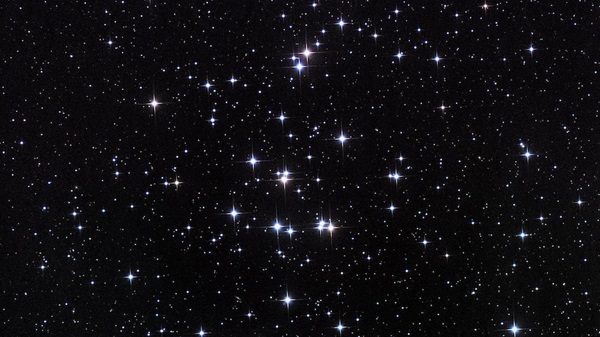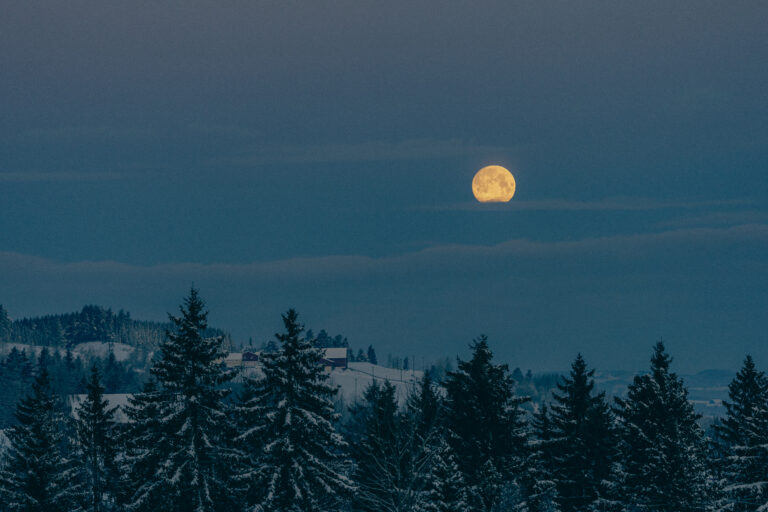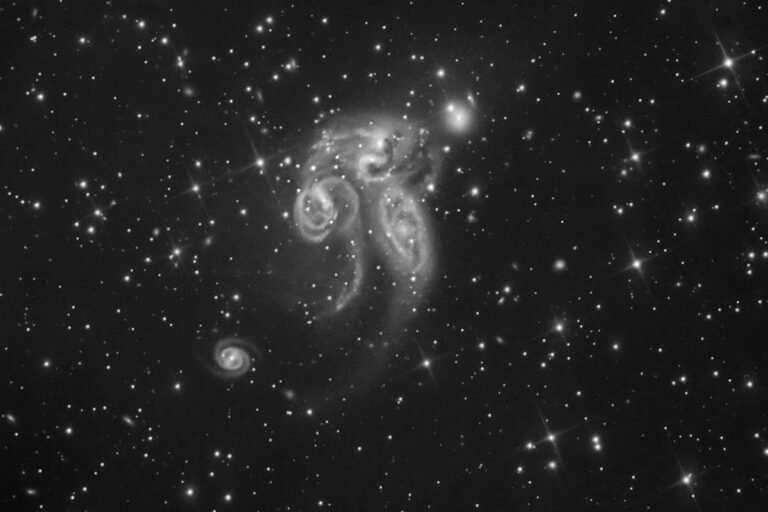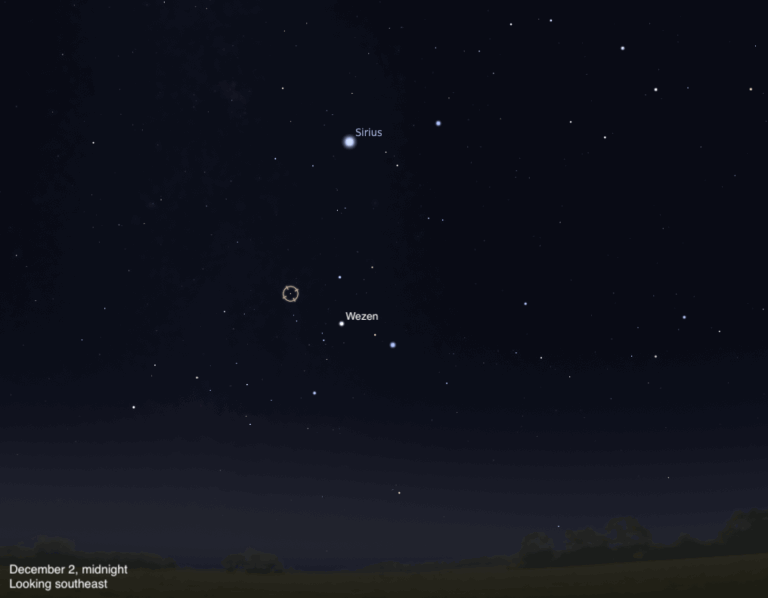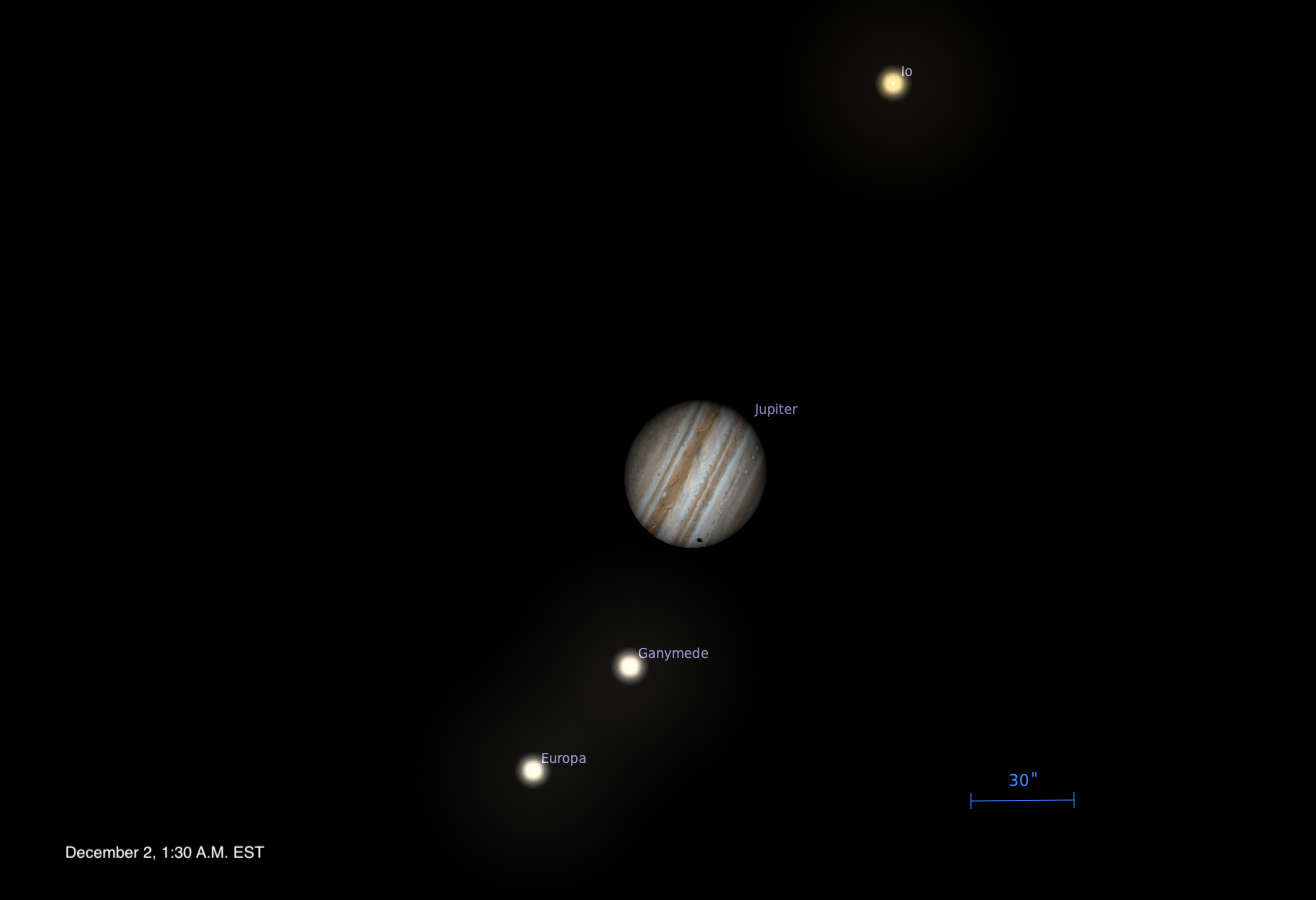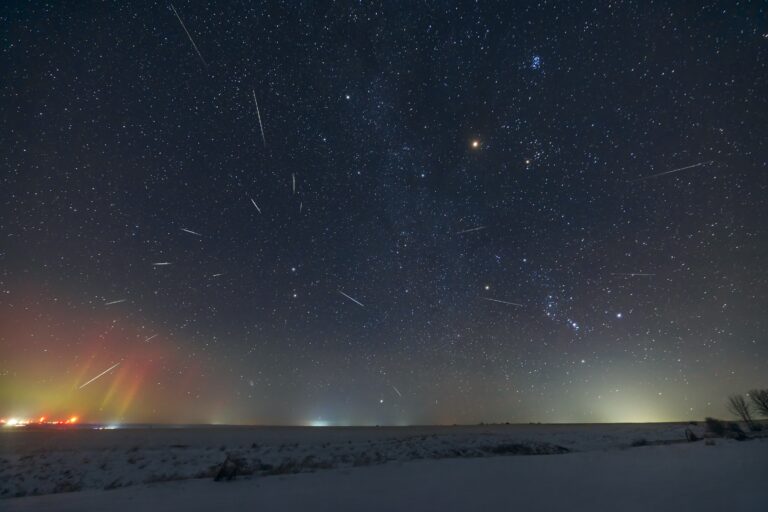Key Takeaways:
The Big Dipper’s familiar shape rides high in the northeast on evenings in late March. The spring sky’s finest binocular double star marks the bend of the Dipper’s handle. Mizar shines at 2nd magnitude, some six times brighter than its 4th-magnitude companion, Alcor. Even though these two are not physically related, they make a fine sight through binoculars. (People with good eyesight often can split the pair without optical aid.) A small telescope reveals Mizar itself as double — and these components do orbit each other.
Saturday, March 31
Full Moon arrives at 8:37 a.m. EDT, but our satellite will look completely illuminated all night. You can find it rising in the east shortly after sunset and peaking in the south around 2 a.m. local daylight time. The Moon lies among the background stars of central Virgo, a little less than 10° north of the Maiden’s luminary, 1st-magnitude Spica. But for casual observers, Luna’s main claim to fame tonight might well be that this is the second Full Moon of March, which makes it a so-called Blue Moon.
Sunday, April 1
Mercury reaches inferior conjunction, passing between the Sun and Earth, at 2 p.m. EDT. The innermost planet will return to view before dawn in late April.
Mars and Saturn rise together a little before 2:30 a.m. local daylight time and climb some 20° high in the southeast by 5 a.m. The two planets pass within 1.3° of each other this morning, their closest approach since July 2008. Mars appears a bit brighter than its neighbor, but stands out more for its distinctive orange-red color. The pair appears against the stunning backdrop of northern Sagittarius, with the 5th-magnitude globular star cluster M22 just 0.4° southwest of Mars. When viewed through a telescope, Saturn shows a 17″-diameter disk surrounded by a stunning ring system that spans 38″ and tilts 26° to our line of sight. Mars looks bland in comparison, with a few subtle details displayed on a disk 9″ across.
Tuesday, April 3
The waning gibbous Moon points the way to Jupiter this morning. They actually rose before 11 p.m. yesterday evening, but they appear more prominent as they climb higher and edge closer after midnight. By the start of morning twilight, less than 5° separate the two. Of course, Jupiter is easy to find all week because it shines so brightly, at magnitude –2.4, against the faint backdrop of Libra. A telescope reveals the planet’s 43″-diameter disk and four bright moons.
Wednesday, April 4
Although the calendar may say it is spring, the so-called Winter Hexagon remains prominent on April evenings. One of the sky’s largest asterisms — a recognizable pattern of stars separate from a constellation’s form — the hexagon stands out in the western sky after darkness falls. To trace the asterism, start with southern Orion’s luminary, Rigel. From there, the hexagon makes a clockwise loop. The second stop is brilliant Sirius in Canis Major. Next, pick up Procyon in the faint constellation Canis Minor, then the twins Castor and Pollux in Gemini, followed by Capella in Auriga, Aldebaran in Taurus, and finally back to Rigel.
Thursday, April 5
Brilliant Venus appears low in evening twilight all week. Look for the blazing point of light about 10° above the western horizon 45 minutes after sunset. The planet shines at magnitude –3.9 and is by far the brightest object in the night sky after the Moon. A look at Venus through a telescope shows an almost fully illuminated disk that spans 11″.
Friday, April 6
One of the spring sky’s finest deep-sky objects, the Beehive star cluster (M44) in the constellation Cancer the Crab, lies high in the south after darkness falls. With naked eyes under a dark sky, you should be able to spot this star group as a faint cloud. But the Beehive explodes into dozens of stars through binoculars or a small telescope.
The waning gibbous Moon joins forces with Mars and Saturn this morning. From mid-northern latitudes, the Moon rises first, at around 1:40 a.m. local daylight time. Saturn follows about 15 minutes behind Luna and Mars 15 minutes after the ringed planet. All three lie against the backdrop of northern Sagittarius, though the Moon’s bright light drowns out most of the constellation’s deep-sky wonders. Notice how the gap between the two planets has grown in the five days since their conjunction. This morning, Mars lies 3° east of Saturn.
Sunday, April 8
Last Quarter Moon occurs at 3:18 a.m. EDT. You can find the half-lit orb rising in the east with the background stars of northeastern Sagittarius around 2:30 a.m. local daylight time; it hangs relatively low in the southeast as twilight begins. The Moon also reaches apogee today, at 1:31 a.m. EDT, when its orbit carries it farthest from Earth for the month. It then lies 251,123 miles (404,144 kilometers) from us.



